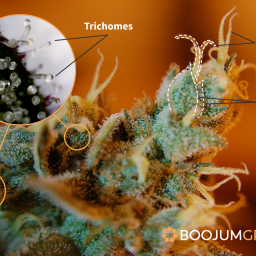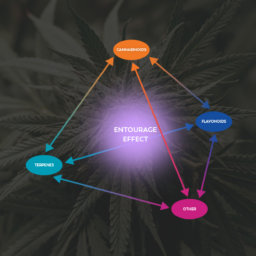You’ve heard of terpenes, but why are they so important? And what exactly is a terpene? These superstar molecules are one of the most interesting variables in cannabis. Understanding how terpenes guide the effects of cannabis, and learning how to harness those effects, might be the biggest single step patients can take to educate and empower themselves when it comes to using cannabis as medicine.
Simply put, terpenes are aromatic molecules made by all plants and some animals. Essential oils are basically the mix of terpenes extracted from a specific plant. These terpenes play a big role in the cannabis industry since they affect the way the plant and its extracts smell and taste. Even more importantly, terpenes—along with cannabinoids—affect how cannabis interacts with the body. They define therapeutic effects, mood, energy levels, and all other characteristics that vary between different cannabis plants, strains, and products.
There are over 200 known terpenes produced across the plant kingdom, with the majority appearing in hemp and cannabis strains. These biosynthetic building blocks use differing combinations of hydrogen and carbon atoms to build complex structures that act on different receptors and neurotransmitters throughout the body, producing a variety of physiological effects. These variations in molecular structure also produce a range of distinct aromas, many of which are used to perfume a multitude of commercial products, from candles to lotions to soft drinks.
Terpenes are produced by plants in order to repel pests and attract pollinators, and are characterized by their strong odors andnon-polar (oily) texture. In cannabis, terpenes originate from the same trichome glands that produce cannabinoids, and can magnify or mitigate the effects of cannabinoids like THC and CBD. In addition to bestowing many of the distinctive aromas and flavorful bouquets found in nature, each unique terpene is associated with individual effects, from the relaxing, musky, myrcene (which lowers the resistance across the blood/brain barrier) to the focusing, woodsy pinene (which has been shown to have a widening effect on lung bronchi, and positively affect memory), and everything in between.
While humans have been utilizing terpenes therapeutically for millennia through herbalism and plant medicine, we’re just starting to tease apart and understand the roles of those individual molecules. Some terpenes have been studied extensively, while others have very little research to support anecdotal evidence on their effects. We’ve compiled information on cannabis’ most prominent terpenes and their potential effects on the body. Read on to learn more about these powerful molecules.
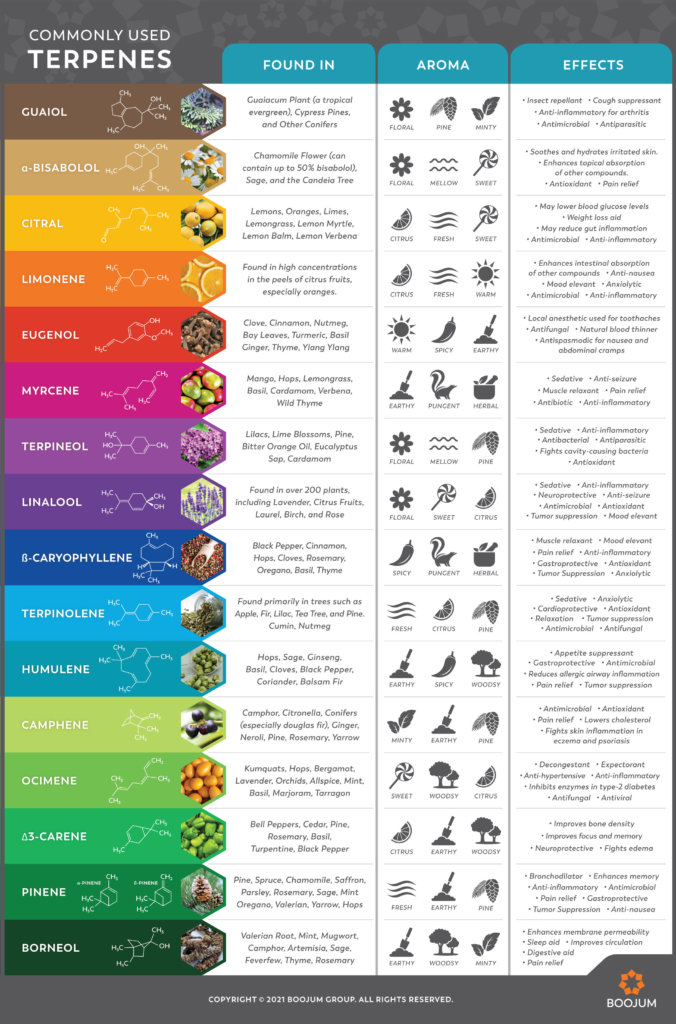
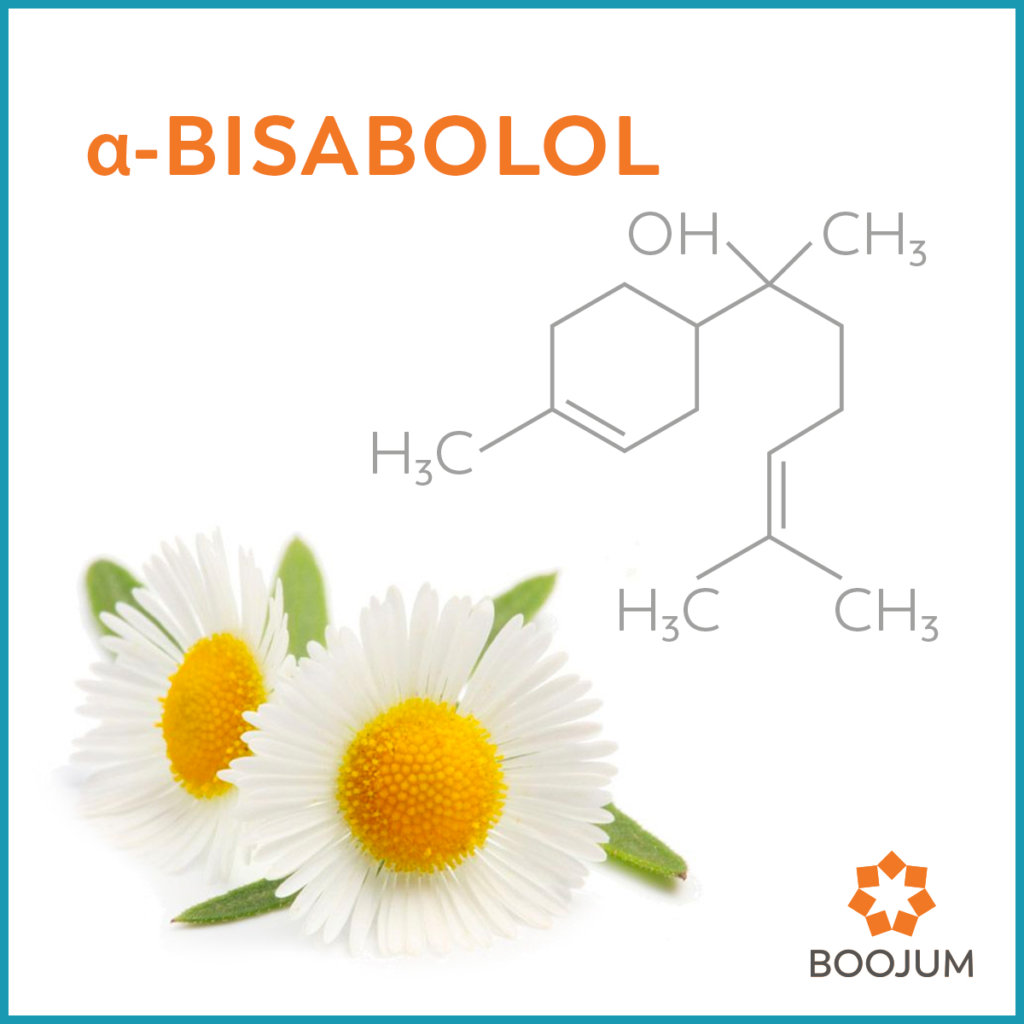
Bisabolol
Bisabolol is one of the superstars of the terpene world. While it wasn’t identified until the last century, it is the primary constituent of chamomile, one of humanity’s most ancient medicinal herbs. Chamomile has been used throughout human history to treat everything from hay fever and insomnia to menstrual cramps and muscle spasms, and it’s a good bet that bisabolol is behind a good portion of the magic.
Don’t be deceived by its sweet and mellow flowery aroma. Bisabolol’s true talent lies in its ability to permeate the top layers of the skin and bring other ingredients with it. So only use bisabolol with things like CBD that you want under your skin! Bisabolol has also been shown in research studies to be gastroprotective, anxiolytic, and has even demonstrated an ability to encourage apoptosis (cell death) of tumor cells. Add to that its anti-irritant, anti-microbial, and anti-inflammatory properties, and you have one badass terpene.
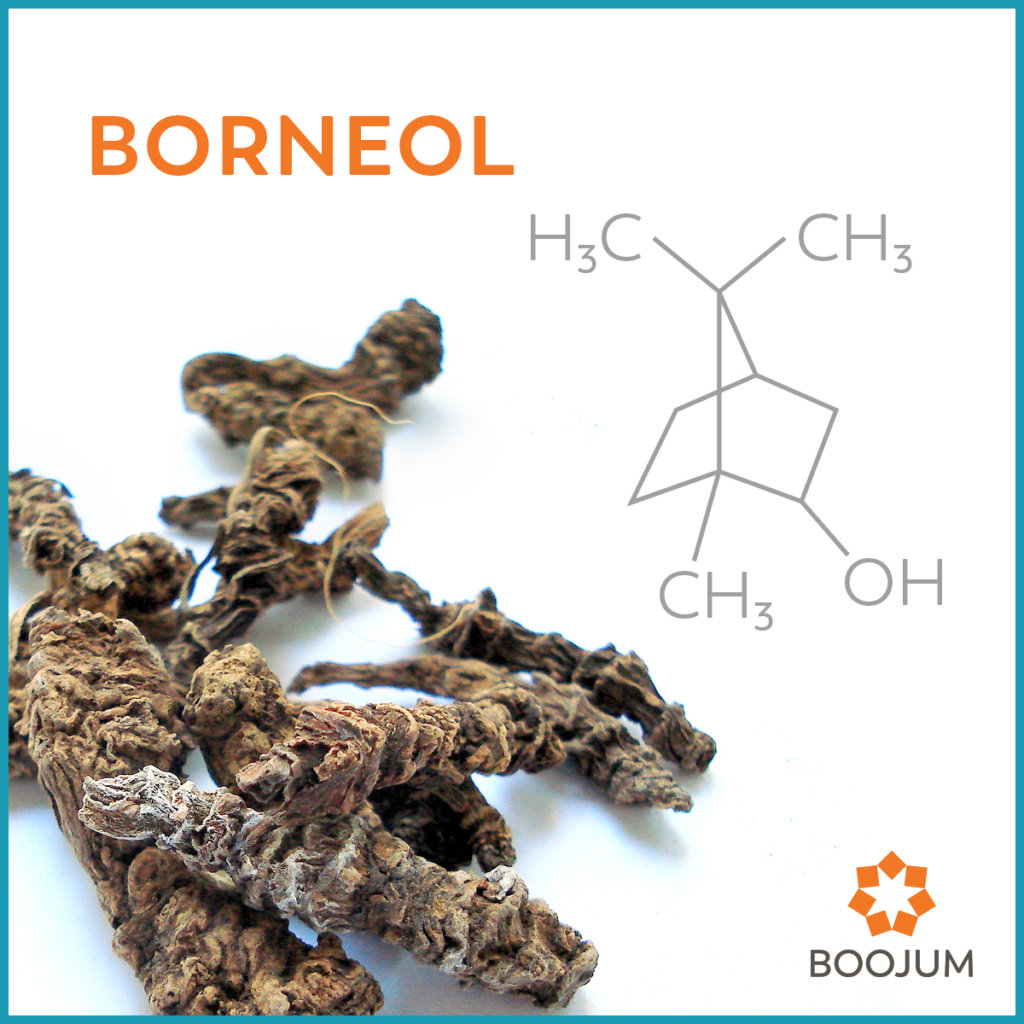
Borneol
A cannabis terpene with many sources and many uses, Borneol has a fresh woodsy essence with sharp camphor notes. These notes gave rise to its historical name, borneo camphor, and can be explained by the fact that borneol can be synthesized from camphor. Borneol has been used in traditional Chinese medicine for everything from fevers to digestion issues, but especially for respiratory illnesses (like coughs and colds) and pain (both acute and chronic). Aside from cannabis, it can be found in valerian, thyme, ginger, rosemary, sage, mugwort, turmeric, and other herbs that have historically been made into teas, poultices, potions, or balms.
Research into borneol’s use in healthcare has upheld its reputation, and it has been shown to improve inflammation, sleep, circulation, digestion issues, stress, and pain. In addition to its individual contribution to human wellbeing, borneol is also an incredibly important player in the entourage effect. It helps synergize with cannabinoids, other terpenes, and even other types of drugs for a quicker and more complete absorption. It’s hard to go wrong with a terpene that has so many benefits, plays a big part in the entourage effects of cannabis, and smells like walking through a fresh forest of balsam fir!
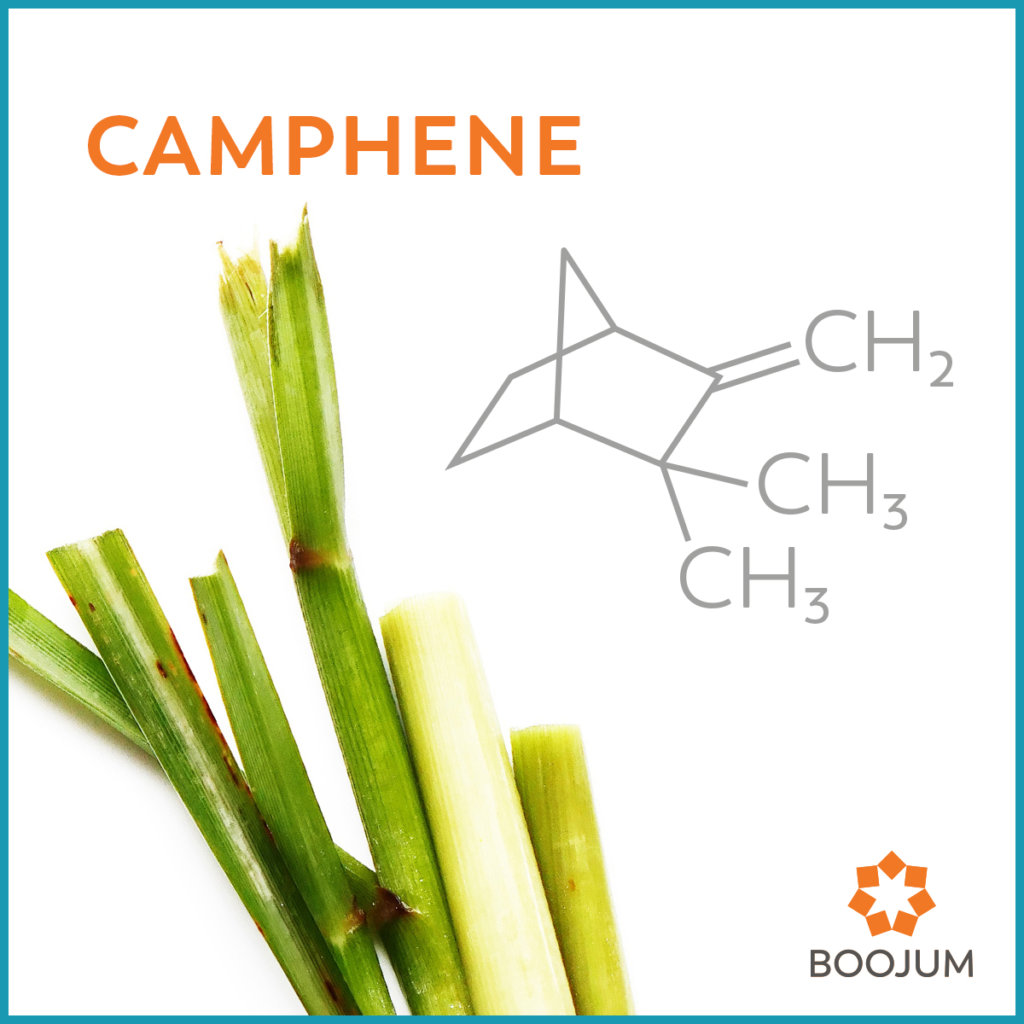
Camphene
Camphene is a volatile terpene with pain relieving, antioxidative qualities. It has a pungent, earthy scent, with musk and pine overtones, and is often confused with myrcene. It can be made from pinene, and shares some aromatic qualities with that terpene. Camphene can be found in lemongrass, conifer, nutmeg, and ginger, and is most prevalent in Indica strains of cannabis.
Camphene shouldn’t be vaped or smoked, as it’s volatility makes it highly combustible, with an acrid, carcinogenic smoke. However, for those consuming camphene in other ways, the benefits outweigh the risk. Studies have shown that this terpene presents antioxidative and pain relieving properties, and that it may treat inflammation caused by oxidative stress. It has also been used to treat eczema and psoriasis and observed to lower triglyceride levels in the blood, in turn lowering the risk of cardiovascular disease.
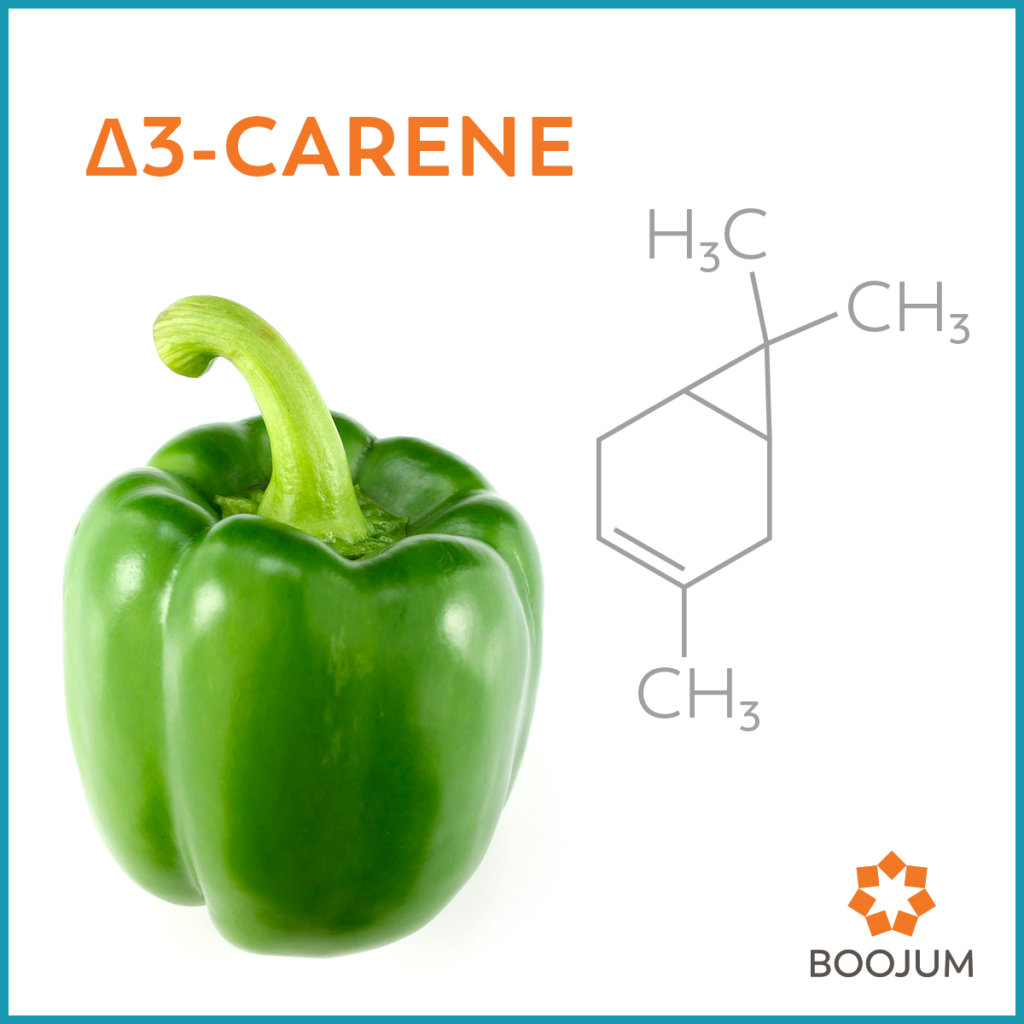
Δ3-Carene
With a fresh, earthy scent and a lot of therapeutic potential, Δ3-Carene is another valuable player on the cannabis terp-team. Δ3-Carene can be found in basil, cedar, bell peppers, and pine. It’s a major component of turpentine, and has a woodsy cedar scent with higher tones of sweet lemon wafting through.
Like many other terpenes, Δ3-Carene is great at fighting inflammation, and is one of the only terpenes known to dry out body fluids (like tears, mucus, sweat, or blood). Δ3-Carene can be used to fight runny noses and allergy symptoms by drawing out mucus, or to treat heavy menstrual symptoms by reducing bleeding. On the flip side, strains with high levels of this terpene are often the culprit behind the cottonmouth, dry throat, and red-eyes often experienced with cannabis use. Δ3-Carene is also known for fighting neurodegeneration and the symptoms of memory disorders like dementia. It has been shown to improve and stimulate memory, mental focus, concentration, alertness, and overall cognitive function. And finally, research has shown that this terpene works to repair diseased and damaged bones.
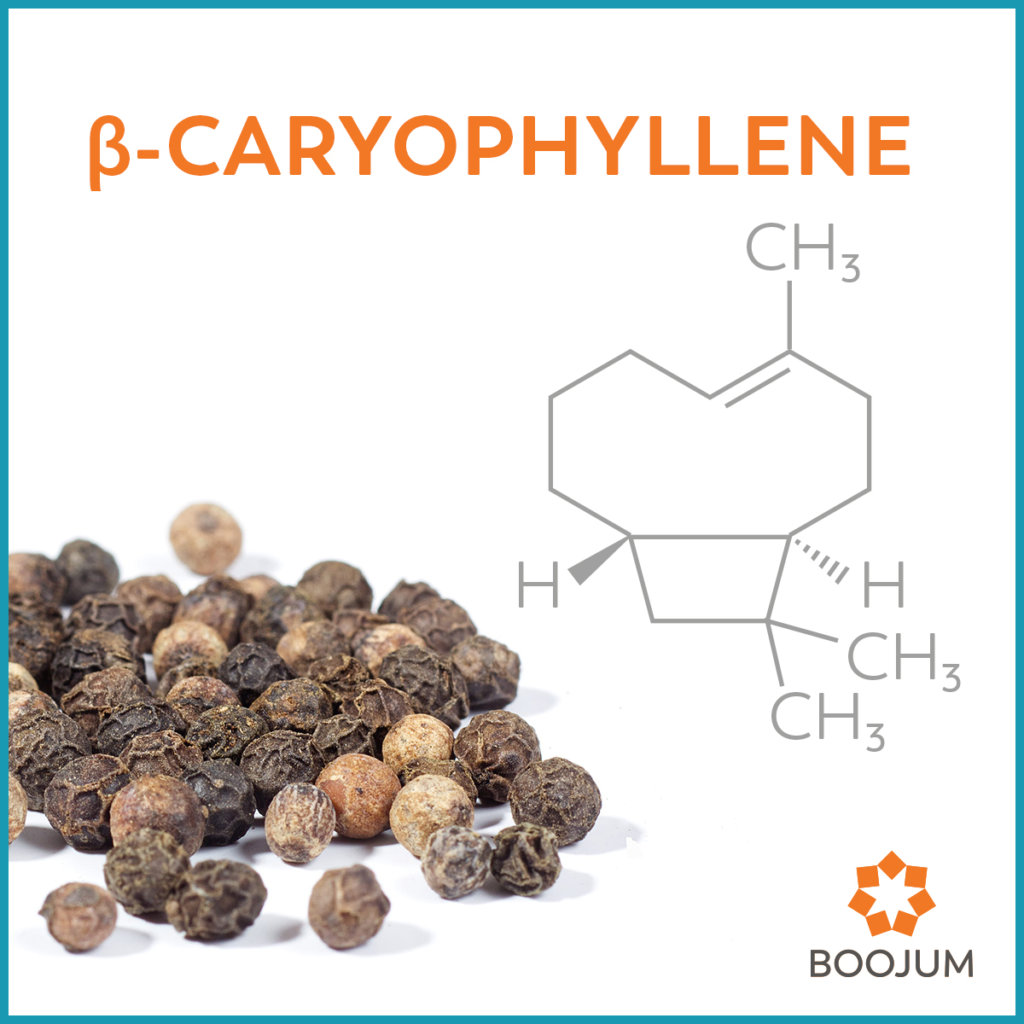
Beta-Caryophyllene
β-Caryophyllene, often called just BCP or caryophyllene, is unique amongst terpenes not only for its large size, but also because it is the only terpene known to directly activate non-psychoactive cannabinoid receptors—making it an honorary cannabinoid according to some researchers. When β-caryophyllene binds to cannabinoid receptors in the body, it directly activates them, leading to many of the benefits associated with activation like pain relief and anti-inflammation.
Having long been a staple of traditional medicine through plants like cloves and cinnamon, BCP is one of the better researched terpenes, and knowing how it works means we know where to start when designing studies. So far it has been looked at for modulating stress and improving mitochondrial function, reducing neuroinflammation, seizures, cholesterol, helping against Alzheimer’s, Parkinson’s, MS, and IBS. Multiple studies have shown potential efficacy in alleviating pain, anxiety, inflammation, and addiction, making it a powerful actor in the Entourage Effect. β-Caryophyllene can be found in spicy, peppery flavors, like cloves, black pepper, cinnamon, oregano, hops, and of course, cannabis. Cloves have been used to treat toothaches since the earliest days of the spice trade, and new research on mice shows that β-caryophyllene has pain killing and anti-inflammatory properties—making caryophyllene a remedy of the past and, quite probably, the future.
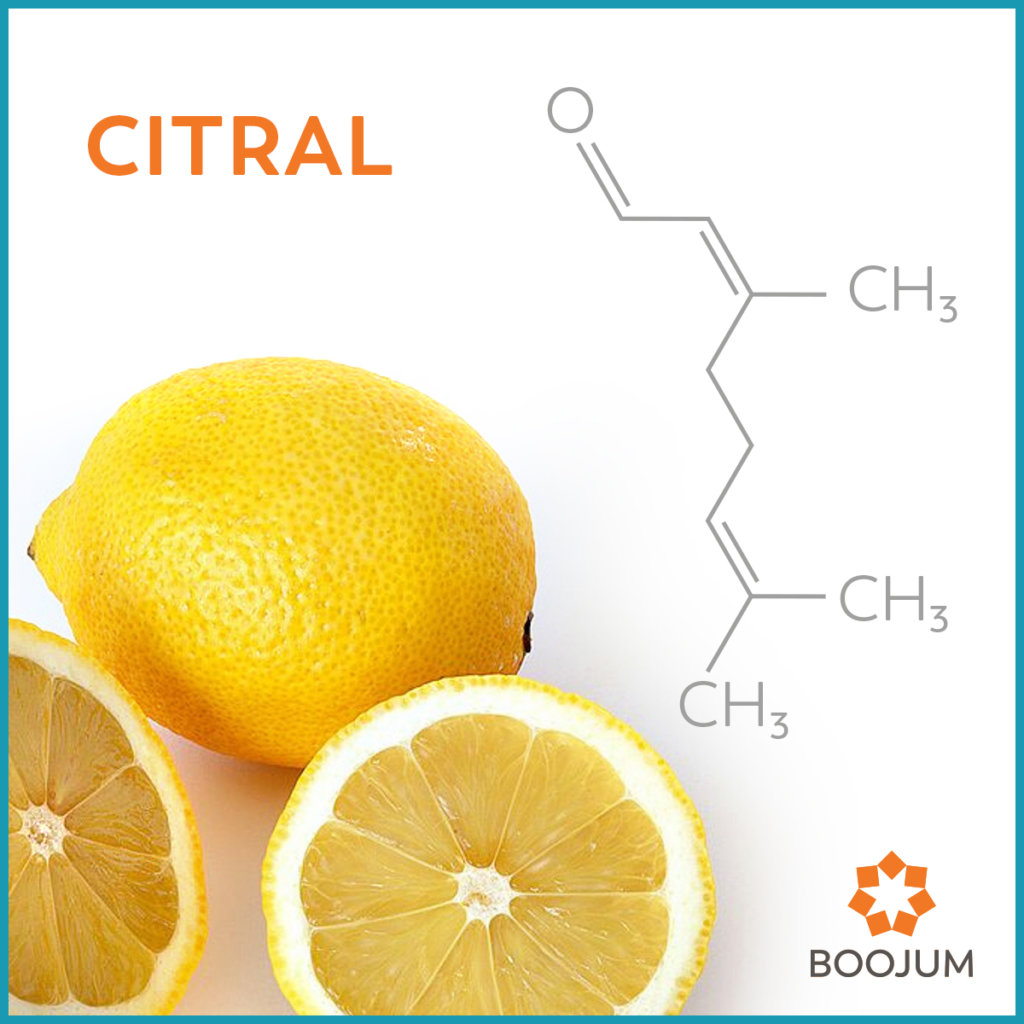
Citral
Citral refers to either of two different compounds which have identical formulas but different structures—geranial and neral, both terpenoids with a sweet lemony aroma. Citral has been used for centuries, lending its citrusy zest to perfumes, candies, soaps, and other household goods. With a bright, fruity-cereal aroma, it’s been used not only to impart lemon flavors, but also to add a tartness to apple or strawberry products, or a zing to bergamot or ginger. Citral makes up the majority of lemongrass and lemon myrtle essential oils, and has long been a folk remedy for calming anxiety, headaches, and insomnia. Scientific research suggests that citral has antibacterial, antimicrobial, antiviral, and antifungal properties; and that it may help to reduce inflammation in the GI tract, reduce blood sugar, and help with weight loss. Limited studies have even shown citral can induce cell death in certain cancer lines.
Not only that, but citral even helps honey bees to find their way home and attracts female green-veined white butterflies! The pheromones that these insects produce to help them communicate and navigate are partly composed of this terpene, making it a truly multi-functional molecule!
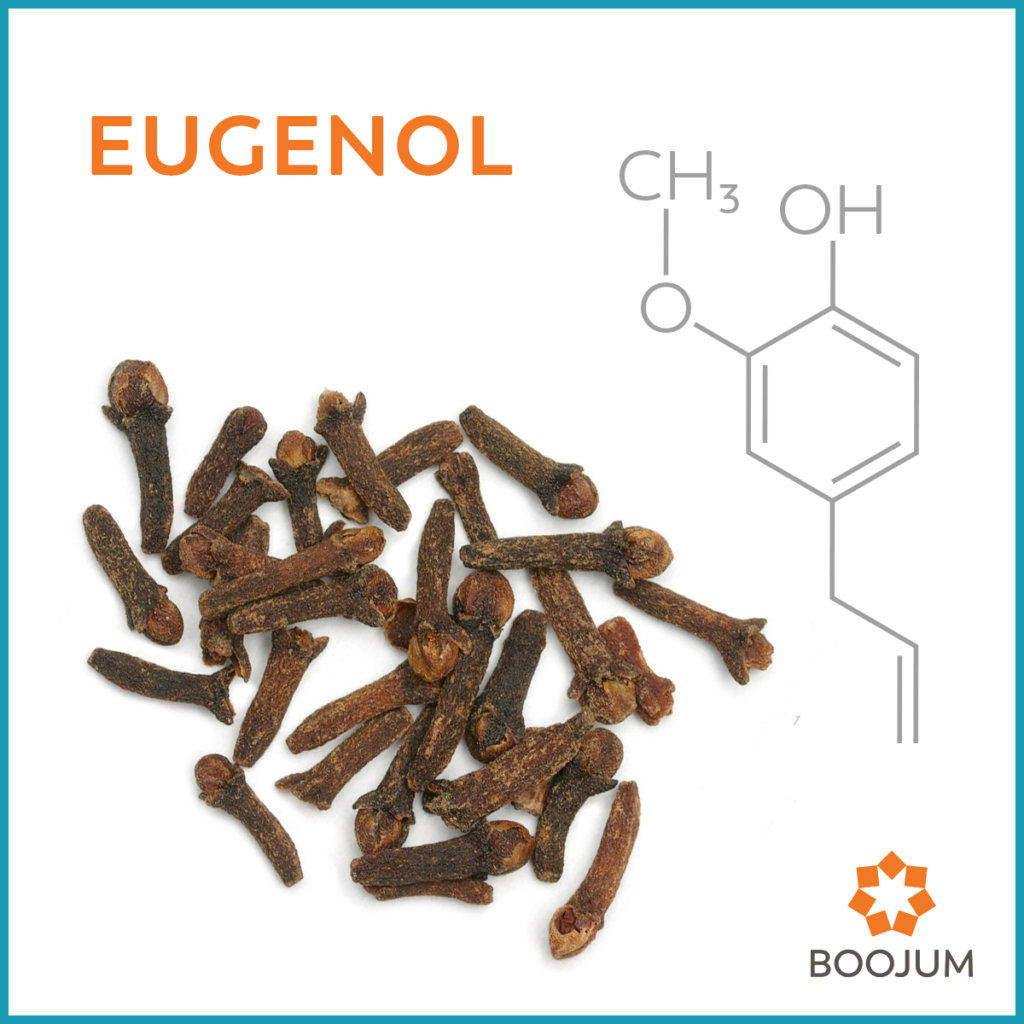
Eugenol
Smelling strongly of the clove from which it gets its name, eugenol has been used as a local anesthetic and anti-inflammatory agent in the west since the earliest trade routes brought it from the Spice Islands. These properties, along with its antibacterial and antiseptic characteristics, have made it a mainstay in dentistry, even today.
Additionally, Eugenol has been shown to help protect against cardiovascular disease by inhibiting platelet clotting, fight yeast infections with its antifungal properties, and improve GI health by easing nausea, diarrhea, and abdominal pains. An antioxidant with a warm spicy flavor, we think the benefits of eugenol will shine as research catches up with this age-old remedy.
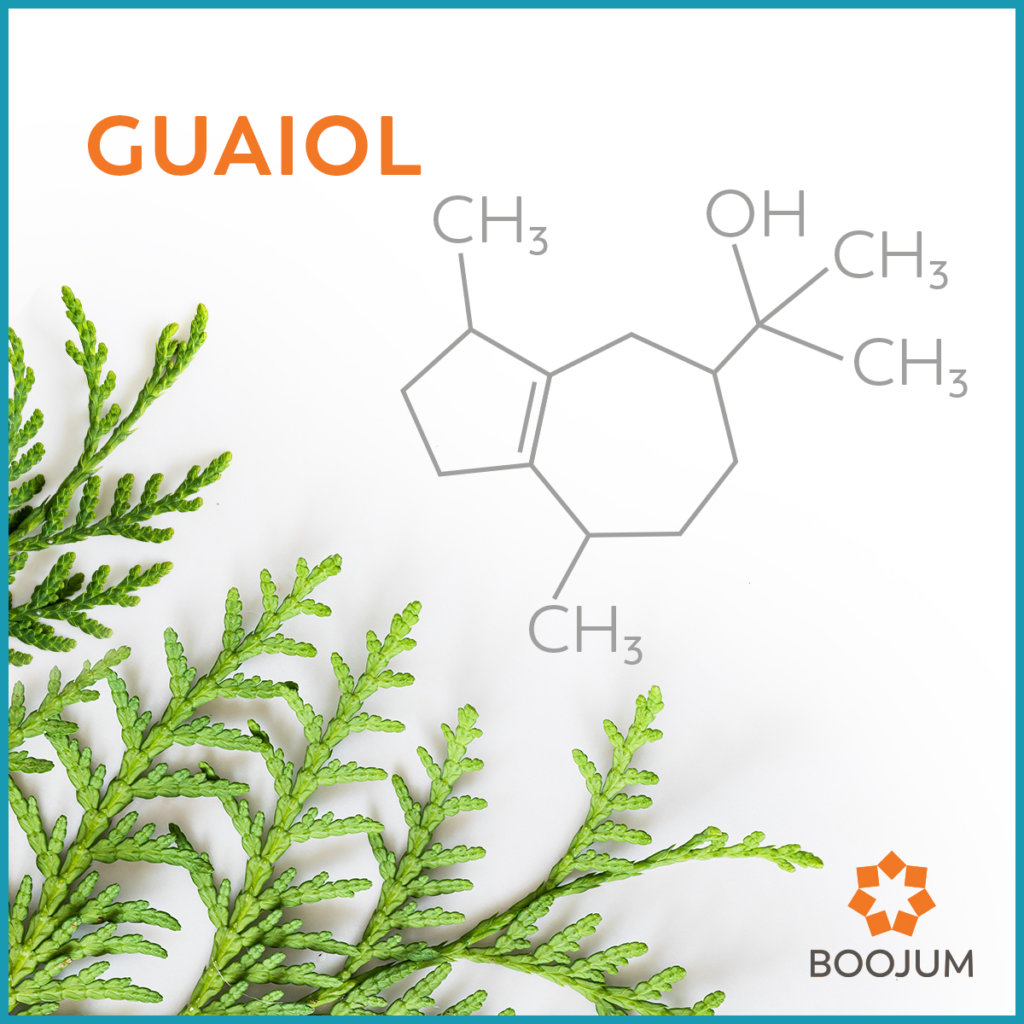
Guaiol
Similar in tone to pinene, guaiol (also called champacol) is a cannabis terpene with a prominent, pine-like aroma that can also be found in conifers. Derived mainly from the Caribbean guaiacum plant, an evergreen with a woodsy rose aroma, guaiol has been used for centuries as a natural remedy to treat syphilis, regulate menstruation, soothe sore throats, coughs, gout and rheumatism, and more.
Fresh and invigorating, guaiol is said to feel like taking a walk through an evergreen forest. It has been shown to soothe stress and inflammation, and has antimicrobial and antioxidant effects. Some of the most exciting properties of guaiol are still under investigation, but it has shown promise when it comes to killing tumor cells in lung cancer patients, strengthening the effects of chemotherapy in mice and battling Staphylococcus aureus.
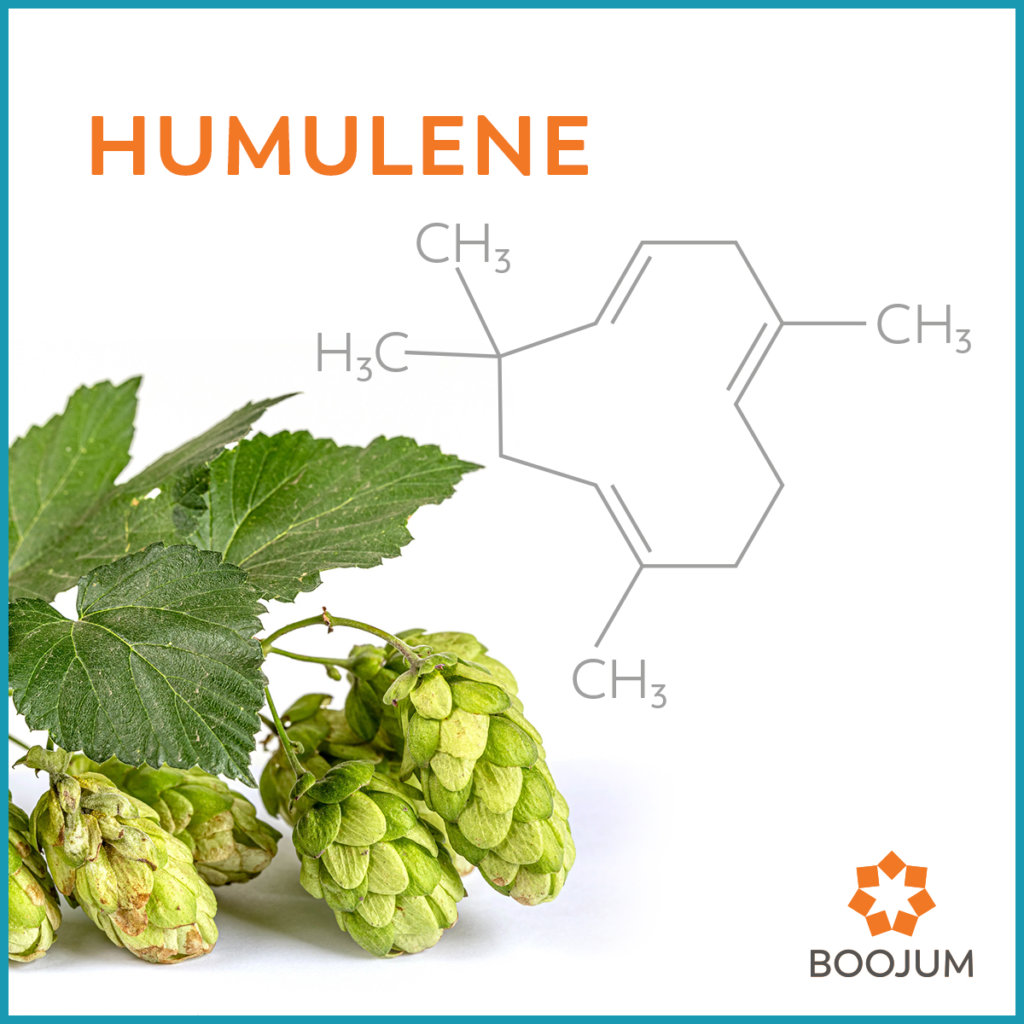
Humulene
Humulene is a spicy, earthy terpene that contributes its aroma to hoppy beers, and its beneficial properties to many holistic therapies. The medical and therapeutic potential of humulene is established, with numerous studies showing anti-inflammatory, antibacterial, anti-tumor, and appetite suppressant action. Therapeutic use of humulene goes back centuries, especially in the East, where it plays a significant role in many traditional remedies like ginseng and balsam. In modern biomedical research, studies have found that it may exhibit anti-inflammatory action, combat allergies, slow bacterial growth, and even fight several types of cancerous cells. It also suppresses appetite, making it a good counterbalance to the munchies.
Humulene is an isomer of β-caryophyllene, which means it has the same formula, but the atoms are arranged differently, making them affect the body differently. Humulene and β-caryophyllene are complementary, often found in the same plants (like basil, sage, and clove), their different structures allow them to work together synergistically to combat arthritis, bursitis, and fibromyalgia.
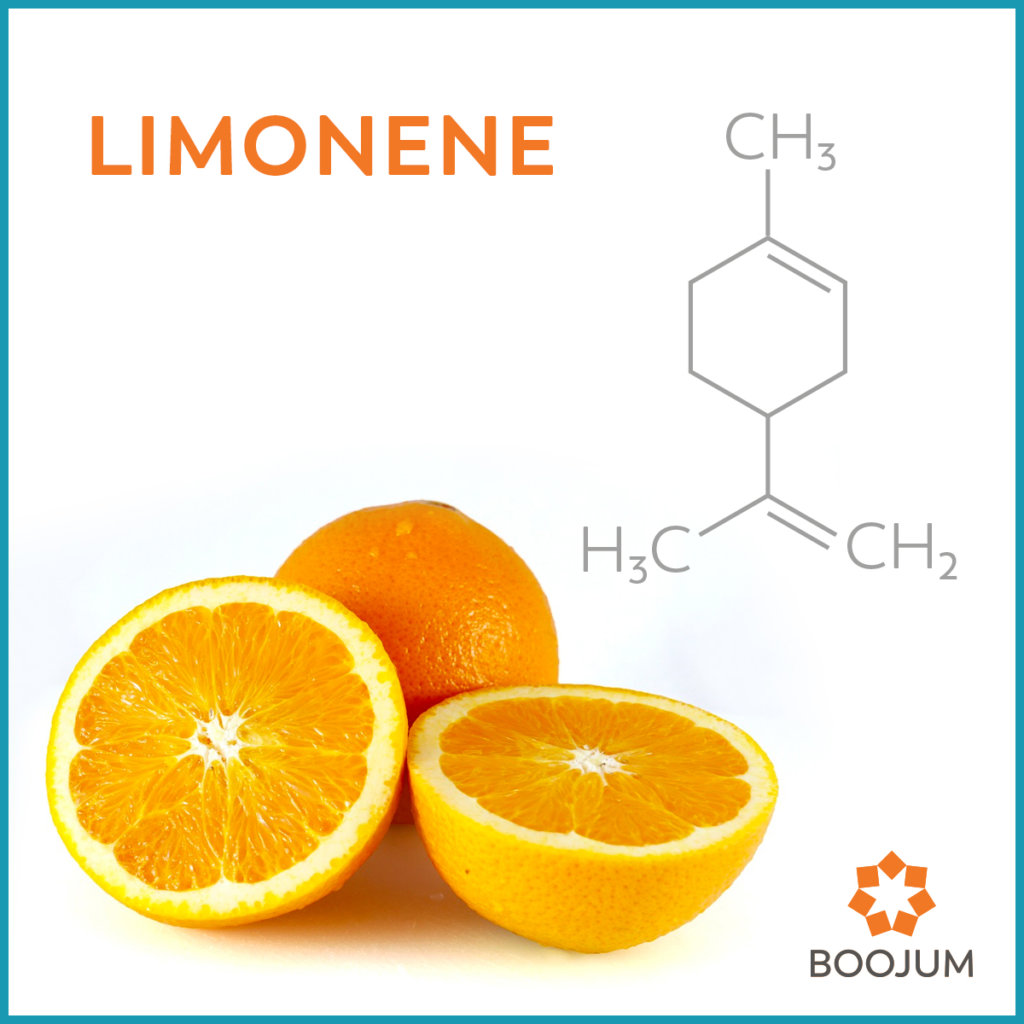
Limonene
A zesty lemon peel, a tangerine popsicle, citrus dish soap – as the second most abundant terpene found in nature, limonene’s fruity, citrus scent is one of the most recognizable flavors today, present in cosmetics, cleaners, and flavoring the world over. Its many properties include antifungal, anti-inflammatory, and antibacterial properties, and the ability to elevate mood (inhalation increases serotonin and dopamine levels in parts of the brain that respond to anxiety, depression, and OCD). It also helps to neutralize gastric acid and supports movement of smooth muscle (and so is often used to relieve heartburn and gastric reflux). Clinically, it’s cholesterol-processing abilities have made it a successful treatment for dissolving gallstones. Cancer research on limonene has shown a lot of promise, as it has been shown to inhibit the growth of certain skin and mammary tumors in rodents, and clinical trials have shown that supplementation for several weeks silenced a protein that promotes breast cancer growth.
There is still little understanding of how or why limonene works the way it does in the brain and body, but we do know that it is almost completely absorbed in the gastrointestinal tract, and rapidly distributed throughout the body to different tissues, where it can be easily metabolized. We also know that it improves absorption of other terpenes and cannabinoids, whether through skin, mucous membranes, or the digestive tract, making it a valuable player in the entourage effect.
Limonene’s popularity has no doubt been due to its versatility. It’s flavor and scent makes us happy, its antifungal and antibacterial properties help us maintain a healthy environment, and its ability to dissolve oils have made it one of humanity’s go-to solvents. Preliminary research suggests that that versatility may be even greater, as we explore limonene’s antitumor properties and the role it plays in what our bodies absorb.
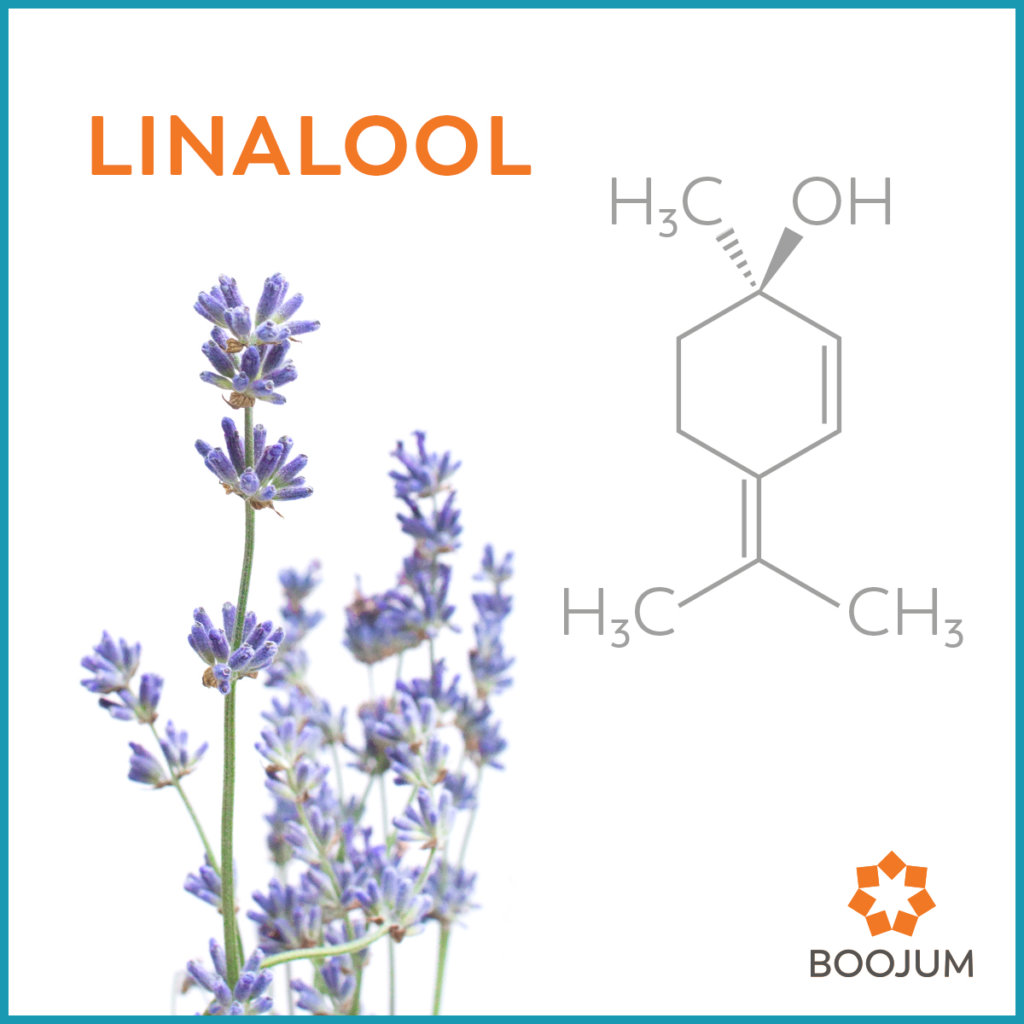
Linalool
Linalool, with its rich floral aroma and hint of spiciness, is found in over 200 plants, including citrus, laurel, birch, rose, and most famously, lavender. Lavender oil is roughly 90% linalool, which gives it its distinct scent. Lavender has long been used in alternative therapies to ease anxiety and insomnia, help with stress and depression, and lessen pain.
When it comes to soothing anxiety, stress, and depression, linalool has been shown to help animals (be they mice or humans) to react less to those triggers, and to improve their mood. This important function can even be seen physiologically, when linalool helps prevent the cellular stress-induced changes in DNA expression. Studies also indicate that linalool blocks glutamate receptors (which explain it’s anti-epileptic properties), enhances the effects of other sedatives, and reduces the excitability of pain neurons (soothing pain) and of acetylcholine (relaxing muscles). It is also seen as a promising Alzheimer’s therapy. As the research community focuses on linalool’s role in these benefits, scientific and clinical data both seem to support its many traditional applications.
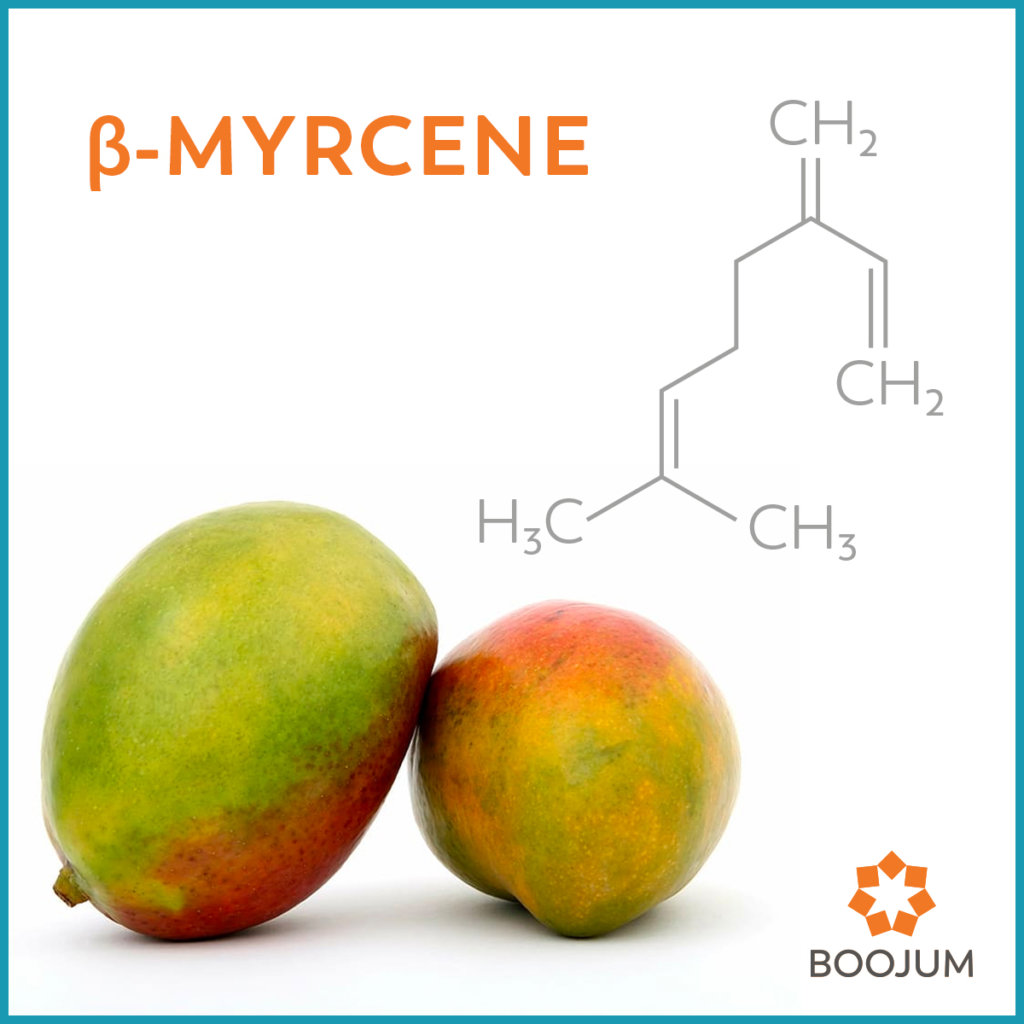
Myrcene
The most abundant terpene found in cannabis, myrcene has a characteristic musky, earthy, spice to it – an aroma as stereotypical of cannabis as the lazy “couch-lock” the terpene induces. Myrcene may be most recognizable in the distinct smell of cannabis, but it can also be found in mangoes, hops, cloves, bay laurel, thyme, lemongrass, basil, parsley, chamomile, and verbena. When it does appear in cannabis, it can monopolize up to 60% of the terpene profile, and it is considered the single most important variable in determining whether a strain has a sedative effect. Research in mice showed that myrcene at very high doses was a sedative as powerful as phenobarbital.
In addition to sedation, preliminary research has shown myrcene to have anti-inflammatory, analgesic, antibiotic, antimutagenic, antispasmodic, and motor relaxant properties. It shows promise in easing symptoms of chronic pain and inflammation. Lab tests showed that when combined with other cells, it provided protection against oxidative cell damage and exerted tumoricidal and anti-invasive effects on multiple different types of cancer cells.
Myrcene also synergizes with other terpenes and cannabinoids by allowing them to absorb into the blood brain barrier more easily. This means that consuming this terpene increases the transport of cannabinoids into the brain, and may accentuate the effects those cannabinoids have. It has long been held that eating a ripe mango prior to consuming cannabis will accentuate the psychoactive effects of THC and lead to a more potent high.
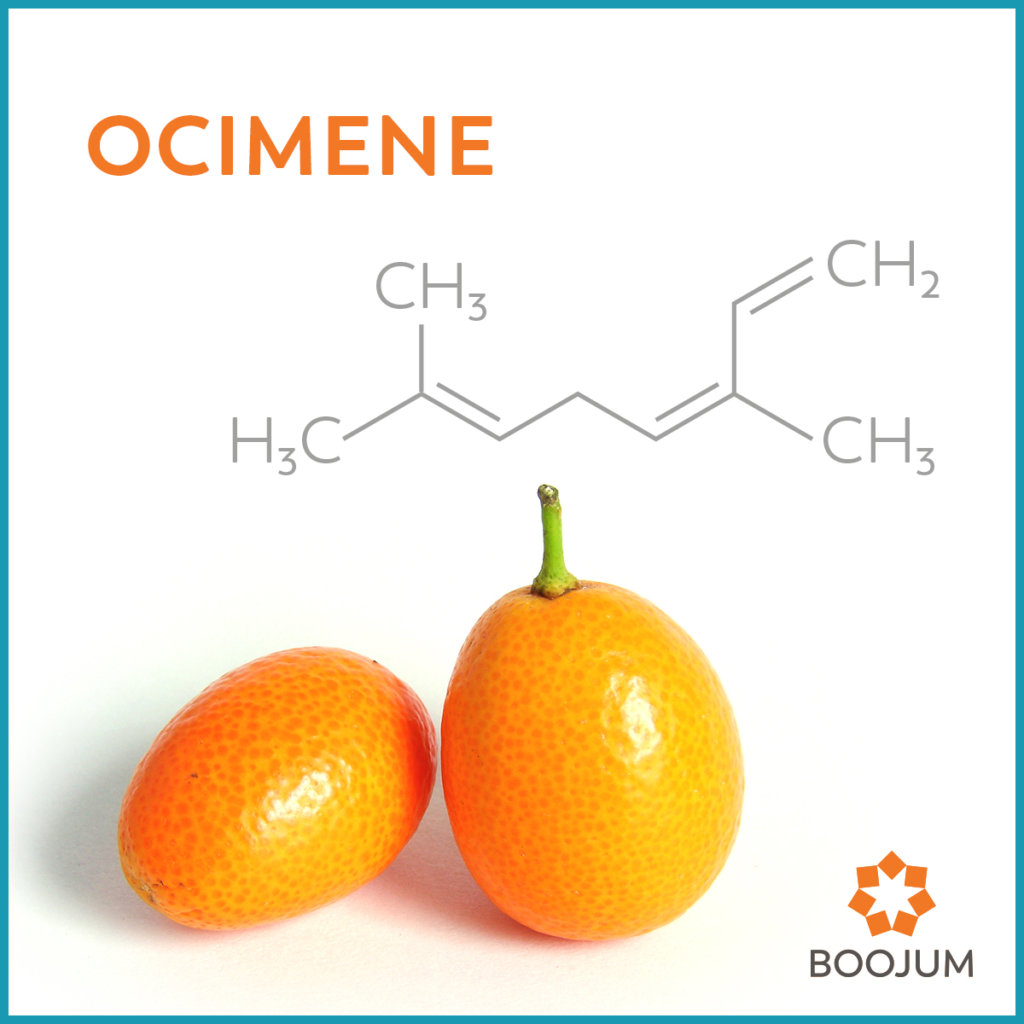
Ocimene
Ocimene is a common monoterpene that evokes forest glades and wildflower meadows. With a sweet, herbaceous aroma and an uplifting effect, ocimene is present in many plants, including tarragon, bergamot, orchids, and kumquats. While many terpenes are insect deterrents (this is likely the reason for their evolution), plants release ocimene not only to repel pests, but also as a signal to warn other plants in the area to prepare their defenses.
Plants with high ocimene content were traditionally used in the Middle East to help preserve dairy and other foods against yeasts, molds, and insect larvae. Ocimene’s benefits haven’t been researched independently, but essential oils with a large ocimene component have. Studies have shown that these oils can help to inhibit enzymes responsible for diabetes and hypertension, fight fungal species like ringworm, inhibit SARS-CoV and other viruses, and bring down inflammation. Ocimene is also thought to be a decongestant and expectorant—clearing out the respiratory system, but also inducing coughing.
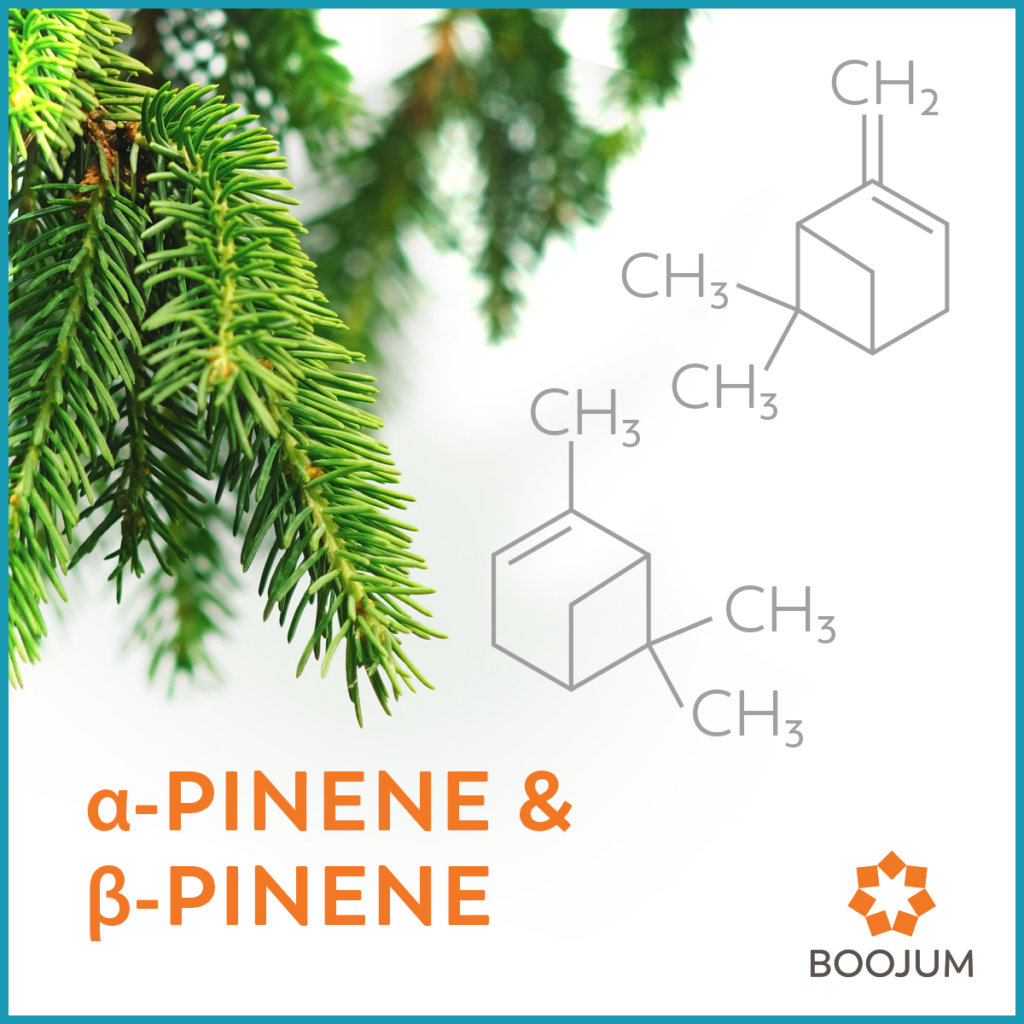
Pinene
Pinene is one of the most common terpenes found in cannabis, and its pleasant aroma and many therapeutic benefits make it an appealing addition to any strain. Most people will recognize the smell of pinene. It’s the smell of pine trees, sage bundles, basil and bay leaves. Found in the resin, and to a lesser extent the stems and leaves of many plants, pinene has two distinct isomers (meaning different structures built from the same number and type of atoms). Alpha-pinene (pictured) is highly concentrated in pine and rosemary (in addition to cannabis), whereas beta-pinene can be found in dill, parsley, basil, and hops.With a boiling point of around 155° Celsius, it is one of the first terpenes lost during processing; however, if it can be preserved, it plays a valuable role in human health and mood.
From traditional Chinese medicine, where pinene was used to treat asthma, pain, ulcers, and anxiety –to cutting edge research, where it shows promise inhibiting hepatoma carcinoma, and as an effective antimicrobial against bacteria and fungi, this terpene has exhibited a wide range of therapeutic benefits. It has also shown anti-inflammatory properties, and is considered a bronchodilator (the bronchi and bronchioles are airways within your lungs, and dilating them helps with asthma and other breathing conditions). Not only that, but pinene can help to counteract the memory impairing effects of THC by penetrating the blood-brain barrier to inhibit the enzyme acetylcholinesterase –allowing for better memory retention. With its woodsy, nostalgic aroma, well-documented health benefits, and primary effects of alertness, creativity, and memory retention, pinene is always a welcome component.
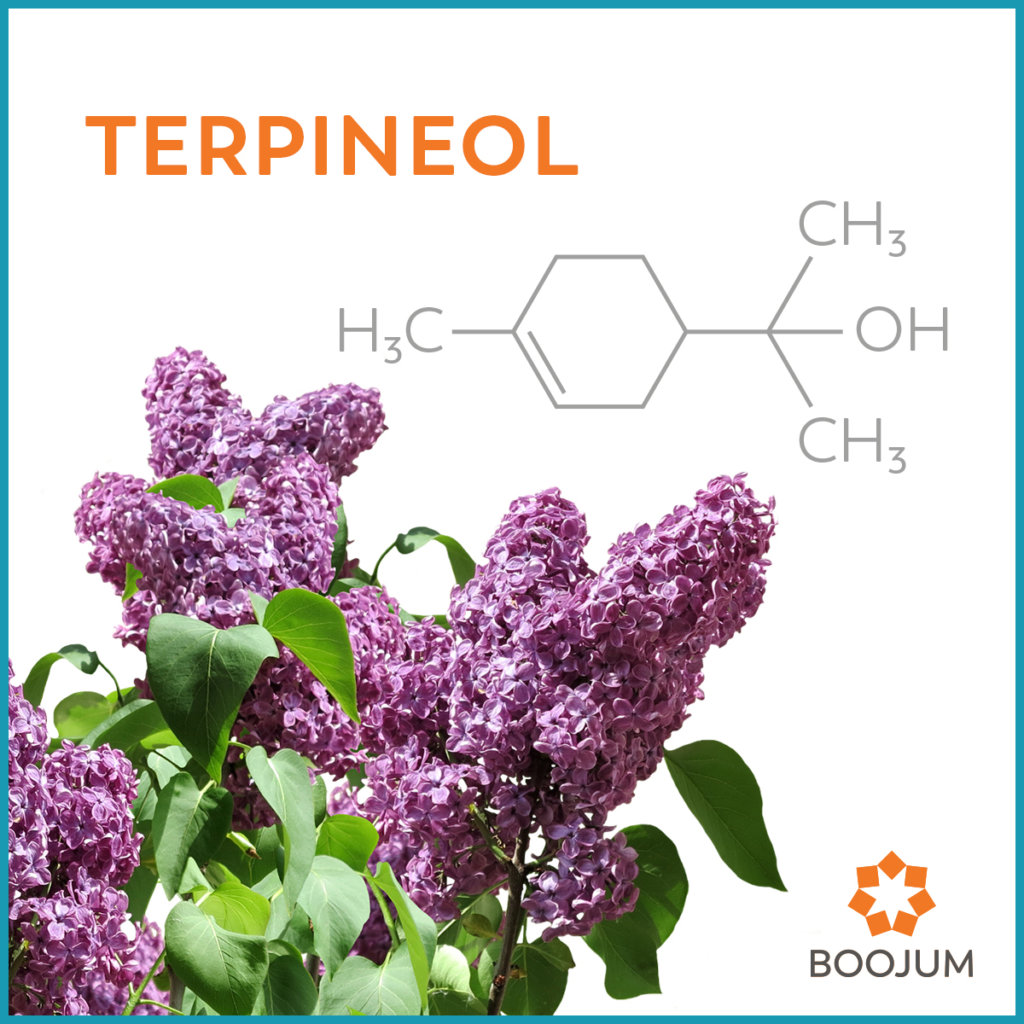
Terpineol
Terpineol, with its delicate flavors of lilac, linden flower, and pine, its pleasant sedative effects, and a growing list of therapeutic uses, is an all-too-often sidelined terpenoid with a lot of potential. Terpineol has a relaxing, couch-lock effect contradictory to pinene’s active reputation. We love terpineol not only for its deliciously relaxing effects, but also for the sweet simple flavor it adds to cannabis and other concoctions.
Terpineol is found in over 150 plants, from cannabis, lilacs, and lime blossoms, to cardamom and pine. Used to scent soaps, lotions, teas, and baked goods, terpineol’s gentle woodsy lilac aroma is familiar, if hard to place. Therapeutically, α-terpineol has been used in traditional cold and flu remedies (as a main component of linden flower), and modern research has shown this terpenoid to possess a host of other potential benefits. Several studies show that α-terpineol exhibits anti-inflammatory qualities, helps inhibit some drug-resistant bacteria, and moderates the effects of some strains of malaria. In one research study, α-terpineol showed antioxidant effects comparable to commercial antioxidants, while in another, researchers recommended adding it to toothpaste and gargling solutions for its strong antimicrobial activity against oral bacteria. Research also shows behavioral changes with terpineol, with mice decreasing movement by about 40%, making it a likely contender for the “couch-lock” component of favorite indica-type strains. It’s also been shown to contribute to mellower morphine-withdrawal symptoms in mice and improved spatial learning in rats.
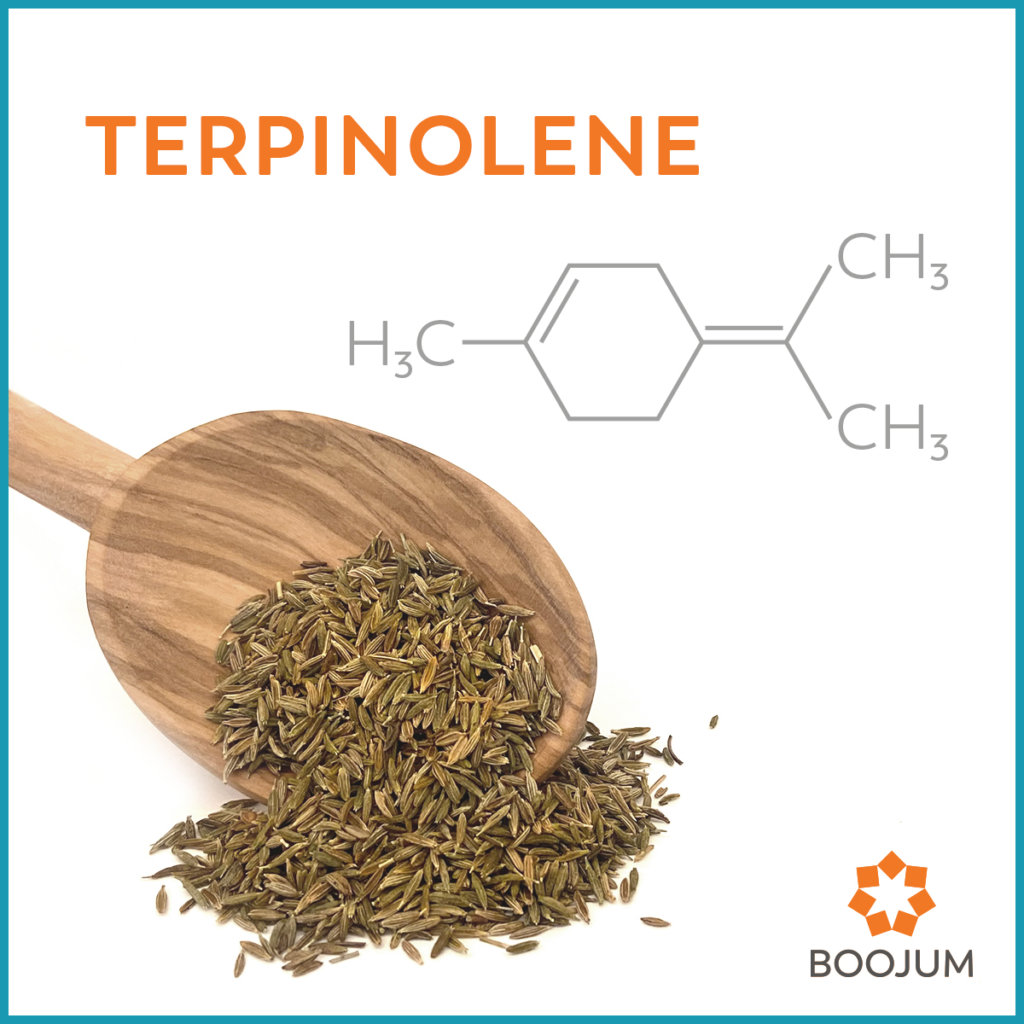
Terpinolene
With a fresh pine essence and bright citrus notes, terpinolene is found primarily in trees (like apple, fir, lilac, tea tree, and pine), though also present in cumin, nutmeg, and, of course, cannabis. Terpinolene is known for being the most uncommon of the common terpenes, often present in the background, with a familiar aroma that is nevertheless difficult to pin down. With a scent profile that can be described as everything from woodsy and herbal to floral and citrusy. Terpinolene is a common additive to beauty and cleaning products, and its aroma is often characterized as “fresh,” but what that means seems to be different for everyone.
Terpinolene is known for exerting a sedative effect and calming the central nervous system—effectively soothing anxiety and stress while relaxing the body. It is a constituent of many essential oils, and as such has been used for generations in folk medicine. Terpinolene is a potent antioxidant, and it’s antifungal effects have been harnessed through tea tree oil. Researchers found that essential oils with terpinolene inhibited certain bacteria, and a 2013 study even reported that “terpinolene is a potent antiproliferative agent for brain tumor cells and may have potential as an anticancer agent.” With that “fresh” scent, and a host of benefits, Terpinolene may not be one of the most common terpenes, but it’s sure to be a favorite!
This overview highlights only a fraction of cannabis terpenes, let alone terpenes in general! However, they are well represented in the cannabis plant and you will see them featured again and again in cannabis products and popular strains. We recommend first trying products with single terpenes, which will allow you to figure out how each one affects your body. Then look for your favorites in cannabis strain profiles or on the COAs (certificates of analysis) of products. Only you can feel how your body responds to the different terpenes, and the more you understand the intricate ways these molecules affect your body, the more personalized and effective cannabis medicine can be!


